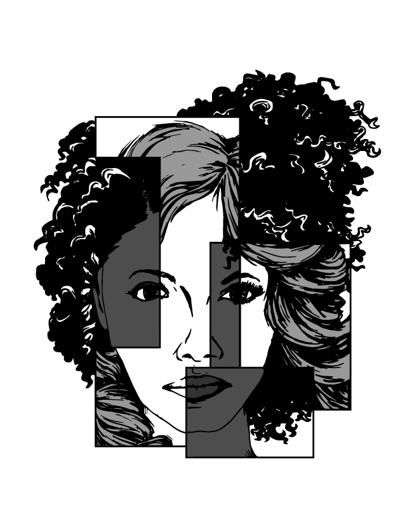Picking a side: the Unique struggle of being biracial
Peggy Packer
Nov 15, 2016

Colton Starley
Being biracial in 2016 is like being in a constant war with yourself. Many people fail to see the multitude of problems biracial individuals face on a day-to-day basis.
In some communities, people even see being mixed-race as a luxury. In this day and age, especially within the black community, people have developed an odd fetish for mixed people. This makes it seem like belonging to two races can be nothing short of extravagant. This belief is extremely wrong.
Sure, at first glance it may seem like these problems are very minor. Being referred to as an “oreo” or a “klondike bar” has never personally had a negative effect on my life. But plenty of biracial people face problems that transcend harmless ones like these.
In the spring of 2016, I was given the opportunity to meet with a representative from Northwestern University in Evanston, Ill., for an admissions interview. It started off really well. Questions were asked about my goals and my hobbies — exactly what you would expect in an interview. But it slowly progressed into less of an interview and more of a lecture on my race.
He began to tell me about the type of environment he believed was present at Northwestern, one he claimed was very racially divided between black people and white people. I made an attempt to explain that I was biracial, a mixture of African-American and Caucasian, and could fit well in both communities.
My interviewer responded to this explanation with, “Not at Northwestern you’re not. Either you’re black or you’re white. You have to pick a side.”
I was immediately upset and confused. I couldn’t believe he felt it was okay to say that to me. After some thought, I realized while this was my first time facing this problem in a formal situation, I had been asked to pick a side more times than I could count. This was a normal occurrence, and I had absolutely no reason to be surprised.
Choosing a side is a common problem multiracial people face in countless instances throughout their lifetimes. We are constantly approached with questions asking us which side we identify with more or which race we consider ourselves. People have attempted to push me more toward one side or the other with comments informing me I don’t act black enough.
I still struggle to understand why the two cultures I come from cannot coexist within me the way they do in my DNA. I should not have to choose which race I want to be, I should be able to exist as equal parts of both.
Perhaps, the constant urges to pick a side are an attempt to help us fit in with one race — another significant problem biracial people face in today’s world. Sadly, being biracial often means never being enough. In my case, I often feel like I am too black for the white people, yet too white for the black people. My African-American peers have told me at least a million times I don’t count as black because I act white, which I don’t even think is a real thing.
On the other hand, my Caucasian peers have denied me of the other half of my existence by saying that I cannot qualify as white because I look black. If I am both black and white, but cannot truly be either or, what can I be?
This very common mentality puts biracial people in a situation with which they can never truly feel included.
The mere existence of multiracial people is a symbol of progression in the United States. It is proof we have evolved from a time where different races could not even be in the same restaurants, to a time where both races can coexist within one body. Making us choose between one or the other is an attempt to take a step backward.
I am the product of a black father and white mother, and both are equally a part of me. Allowing biracial people to exist as they are is the necessary next step to destroying racial barriers in our country.
No comments:
Post a Comment